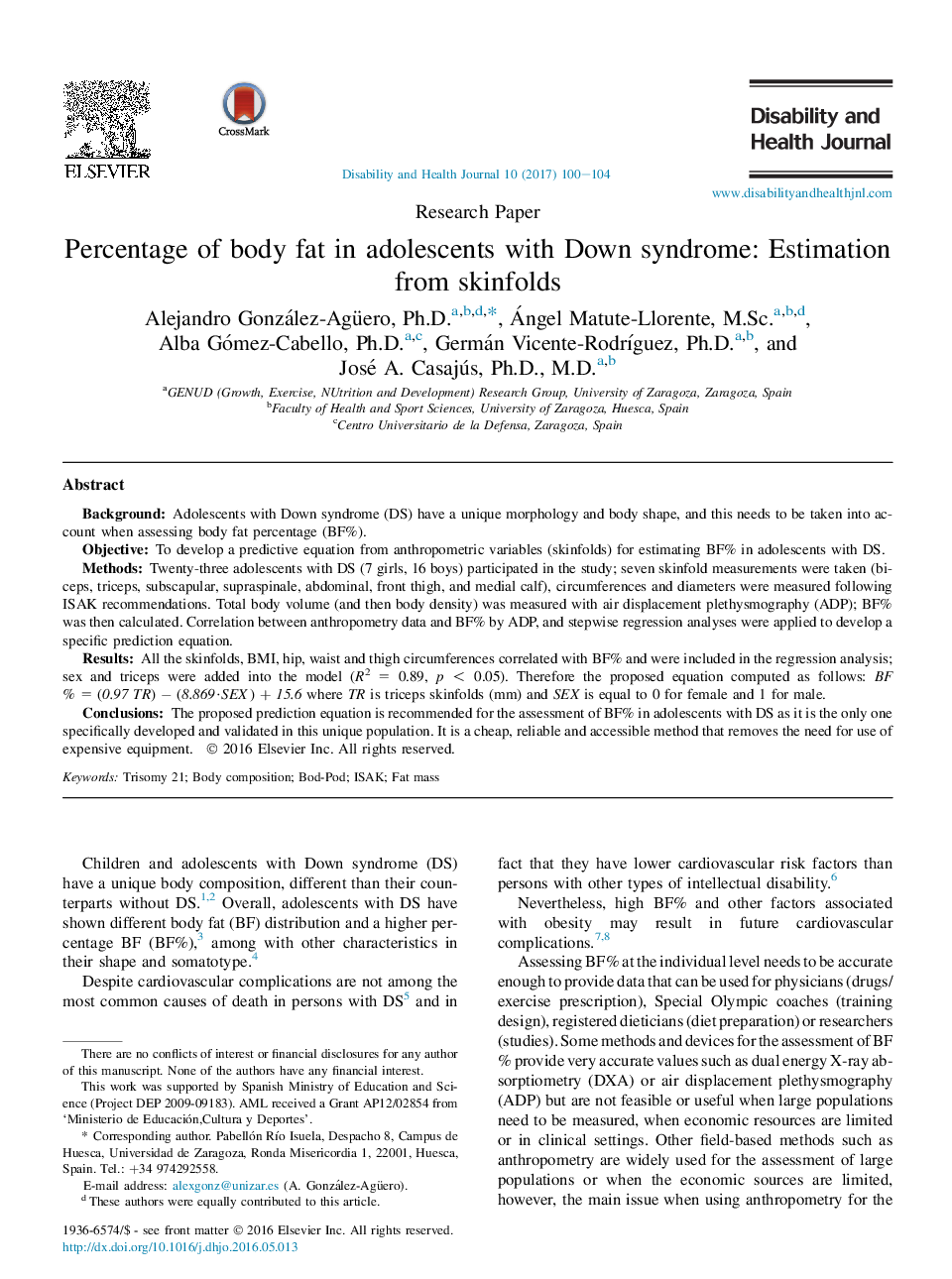| Article ID | Journal | Published Year | Pages | File Type |
|---|---|---|---|---|
| 5723283 | Disability and Health Journal | 2017 | 5 Pages |
BackgroundAdolescents with Down syndrome (DS) have a unique morphology and body shape, and this needs to be taken into account when assessing body fat percentage (BF%).ObjectiveTo develop a predictive equation from anthropometric variables (skinfolds) for estimating BF% in adolescents with DS.MethodsTwenty-three adolescents with DS (7 girls, 16 boys) participated in the study; seven skinfold measurements were taken (biceps, triceps, subscapular, supraspinale, abdominal, front thigh, and medial calf), circumferences and diameters were measured following ISAK recommendations. Total body volume (and then body density) was measured with air displacement plethysmography (ADP); BF% was then calculated. Correlation between anthropometry data and BF% by ADP, and stepwise regression analyses were applied to develop a specific prediction equation.ResultsAll the skinfolds, BMI, hip, waist and thigh circumferences correlated with BF% and were included in the regression analysis; sex and triceps were added into the model (R2 = 0.89, p < 0.05). Therefore the proposed equation computed as follows: BF% = (0.97 TR) â (8.869·SEX) + 15.6 where TR is triceps skinfolds (mm) and SEX is equal to 0 for female and 1 for male.ConclusionsThe proposed prediction equation is recommended for the assessment of BF% in adolescents with DS as it is the only one specifically developed and validated in this unique population. It is a cheap, reliable and accessible method that removes the need for use of expensive equipment.
